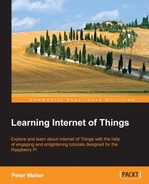Internet of Things is one of the current top tech buzzwords. Large corporations value its market in tens of trillions of dollars for the upcoming years, investing billions into research and development. On top of this, there is the plan for the release of tens of billions of connected devices during the same period. So you can see why it is only natural that it causes a lot of buzz.
Despite this, nobody seems to agree on what Internet of Things (IoT) actually is. The only thing people agree on is that whatever it is, it is worth a lot of money. And where there is a lot of money, there is a lot of competition, which in reality means a lot of confusion. To be able to stand out as a superior player, companies invent new buzz words in an attempt to highlight their superior knowledge. In this battle of gaining the reader's attention, the world is now seeing a plethora of new definitions, one better than the other, such as "Internet of Everything," "Web of Things," "Internet of People and Things," and so on. To pour gasoline on fire, there is a constant overlap and confusion of ideas from related terms, such as "Big Data," "Machine-to-Machine," and "Cyber-Physical Systems" to mention a few.
This lack of consensus on what IoT actually is and what it means makes it somewhat difficult to write a book on the subject. Not because the technical aspects are difficult—they are not—but because you need to define what it is you are going to talk about and also what you are not going to talk about. You need to define IoT in a way that is simple, valid, and constructive, while at the same time it should minimize controversy.
To be able to define IoT, let's first look at how the term was coined. Kevin Ashton noted that most data on the Internet was at the time originally entered or captured into the system by human beings. From a system point of view, a human is nothing more than a slow, error-prone, and inefficient router of data that puts limits on quality and quantity of data available and sometimes even dares to interpret data or correct it. As an alternative, it would be more efficient if these systems could connect to sensors that measure these real-world events or properties directly. So, in this vision, systems bypass human intermediaries and connect directly to sensors connected to the Internet to capture real-world data.
The problem with this definition is that it is not a definition at all but a vision, albeit with an important point. If systems can access data captured by sensors directly, of course, the data will be both more abundant and more correct. This was known decades ago and is a field of study in its own right, labeled "sensor networks". What is the real difference between these two? What is the difference between IoT and Big Data, where the efficient storage of huge volumes of data is handled? How does IoT differ from machine-to-machine (M2M) or device-to-device (D2D) communication, where communication between Things is discussed? Or, how does it differ from cyber-physical systems (CPS) that concerns itself with systems that interact with the real world through sensors and actuators? What is the real difference between IoT and the just mentioned fields of study?
Let's, therefore, have a very simple definition and see where it leads us:
